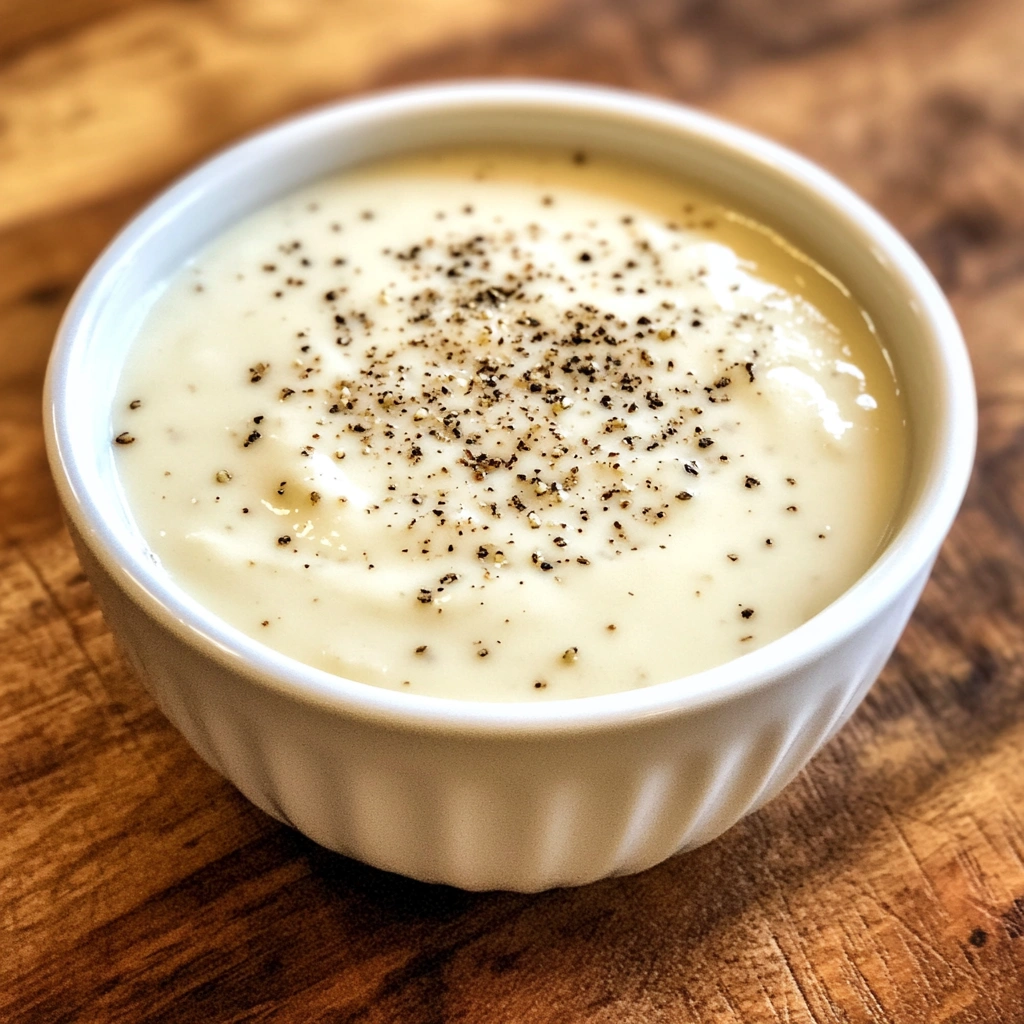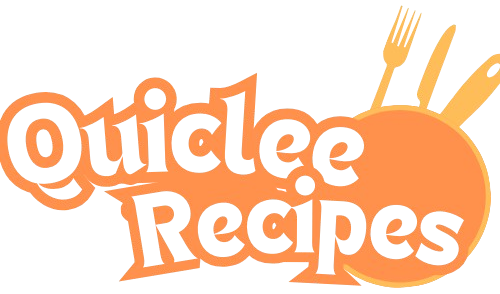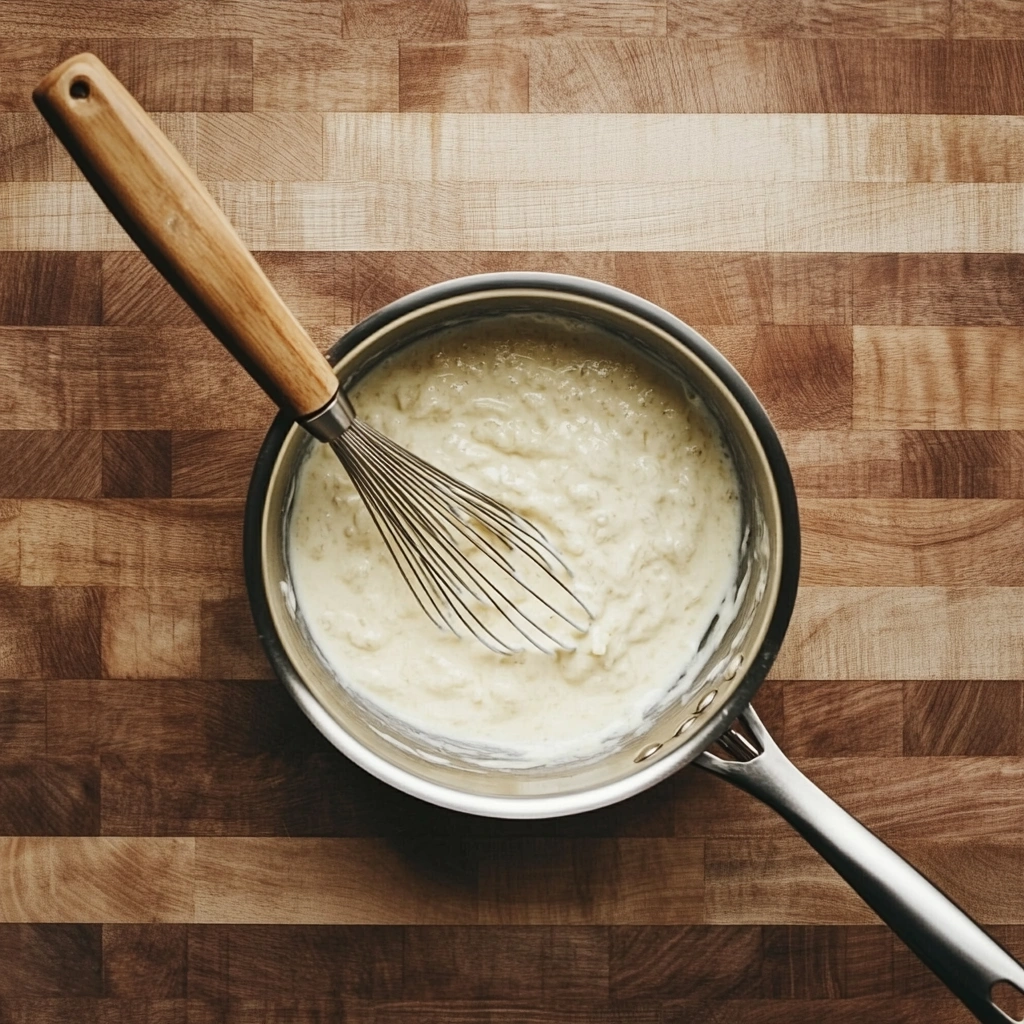White sauce, also known as béchamel, is one of the fundamental building blocks of classic cooking. With its smooth, creamy texture and subtle flavor, it forms the base of many beloved dishes, from pasta to gratins. But how does Gordon Ramsay, one of the world’s most renowned chefs, perfect this timeless sauce? This article dives into Gordon Ramsay’s method, his step-by-step process, tips, variations, and everything you need to know to replicate his magic in your kitchen.
Part 1: Introduction
Cooking Like the Pros: The Importance of White Sauce in Your Kitchen
White sauce, or béchamel sauce, is a classic French culinary creation that every home cook should master. Why? Because it’s incredibly versatile. From forming the foundation of macaroni and cheese to enhancing the flavors of lasagna or casseroles, this creamy concoction brings harmony to countless recipes. Whether you’re a budding chef or just someone who loves a homemade meal, understanding how to make white sauce will elevate your cooking game to new heights.
But here’s the thing — making the perfect white sauce isn’t always as easy as it looks. It can turn lumpy, taste bland, or have the wrong consistency. Thankfully, Gordon Ramsay, with his years of expertise, simplifies the process. His method ensures a silky, lump-free sauce every time, and trust me, you’ll never look back once you try it.
So, are you ready to whip up a sauce that’s as smooth as velvet? Let’s start with what makes this humble sauce so special and why it has stood the test of time.
Why White Sauce Deserves Its Spot in Culinary Basics
White sauce, or béchamel, holds a special place in kitchens worldwide. It’s one of the five “mother sauces” in French cuisine, which means it acts as a base for several other sauces and dishes. Think of it as the building block that ties everything together. While the basic ingredients—butter, flour, and milk—are simple, achieving the perfect sauce requires precision and skill.
Gordon Ramsay emphasizes that consistency and flavor are key when crafting the ultimate white sauce. And here’s a fun fact: even though it’s French in origin, white sauce has made its way into cuisines across the globe, appearing in everything from Italian pasta dishes to classic British pies.
If you’ve ever wondered what separates a good white sauce from a great one, it all comes down to technique. This is where Gordon Ramsay’s expertise comes in handy. By following his tips and tricks, you’ll learn to avoid common pitfalls, achieve the ideal texture, and create a sauce that’s bursting with flavor.
What You’ll Learn in This Article
Before we dive into the nitty-gritty details, let’s take a quick look at what this guide will cover:
- The step-by-step process Gordon Ramsay follows to make the perfect white sauce.
- Expert techniques and tips to avoid lumps, ensure smoothness, and nail the right flavor balance.
- Creative variations of white sauce that can enhance any dish.
- Common FAQs to help answer any questions you might have.
Now, let’s begin this culinary journey with the basics of white sauce and why it remains a must-know recipe for every home cook.
Part 2: What is White Sauce (Béchamel Sauce)?
White sauce, or béchamel sauce, is a timeless staple in the culinary world. Its charm lies in its simplicity—just three main ingredients: butter, flour, and milk. Yet, when combined with care and precision, they create a smooth, creamy masterpiece. Often regarded as the foundation of countless dishes, white sauce adds richness and texture without overwhelming the other ingredients.
But what makes this seemingly simple sauce so special? Let’s explore its origins, history, and the key ingredients that make it a beloved element of classic cooking.
Origin and History of White Sauce
White sauce, or sauce béchamel, has its roots in French cuisine, dating back to the 17th century. It’s named after Louis de Béchamel, a French financier and chief steward to King Louis XIV. While he didn’t invent the sauce, it was perfected under his name by the chefs of the royal court. In the centuries that followed, it became one of the five mother sauces—the backbone of French culinary tradition.
Though its origins are French, the use of white sauce has transcended borders. In Italy, it’s a key ingredient in lasagna and pasta bakes. In the UK, it’s poured over vegetables or used in comforting pies. Across the world, this sauce has proven its versatility, adapting to various cuisines while maintaining its essential character.
Gordon Ramsay, a Michelin-starred chef and culinary genius, often highlights the importance of understanding these classic sauces. According to him, once you master béchamel, you unlock endless possibilities in the kitchen.
Basic Ingredients of White Sauce
At its core, white sauce is made with a roux—equal parts butter and flour—and milk. Each ingredient plays a vital role in creating the smooth, velvety texture that defines a great béchamel sauce.
- Butter: Butter forms the base of the roux. It’s gently melted to create a rich, flavorful foundation. Ramsay often emphasizes the importance of using high-quality, unsalted butter to control the seasoning.
- Flour: The flour, when combined with butter, creates the roux—a thick paste that acts as the thickening agent for the sauce. Cooking the flour properly ensures there’s no raw, floury taste. Ramsay recommends stirring constantly while cooking the roux to achieve a light golden color.
- Milk: Warm milk is gradually added to the roux, creating a smooth, lump-free sauce. Gordon Ramsay’s method involves adding milk in small increments while whisking vigorously to ensure the sauce remains silky and consistent.
While these three ingredients form the foundation, white sauce can be enhanced with salt, pepper, and a hint of nutmeg for added depth of flavor. Ramsay often mentions that nutmeg is the secret to elevating a basic béchamel sauce into something extraordinary.
Why Mastering the Basics Matters
You might be wondering: why spend time perfecting white sauce when it’s so simple? The truth is, the beauty of béchamel lies in its versatility. Mastering the perfect consistency and flavor opens up a world of possibilities. White sauce can transform into:
- Mornay sauce (by adding cheese) for dishes like macaroni and cheese.
- A creamy base for casseroles, lasagna, or vegetable gratins.
- A luxurious topping for fish, chicken, or pies.
Gordon Ramsay believes that when you master these fundamental recipes, you gain the confidence to experiment. Once you’ve nailed the basics, you can tweak the flavors, adjust the thickness, and use the sauce creatively in your own dishes.
In essence, understanding the history, purpose, and ingredients of white sauce sets you up for success. As we move forward, you’ll learn exactly how Gordon Ramsay creates his foolproof, velvety-smooth white sauce—and trust me, it’s easier than you think.
Part 3: How Does Gordon Ramsay Make White Sauce?
When it comes to mastering white sauce, Gordon Ramsay’s method simplifies the process into easy, foolproof steps. Whether you’re an experienced cook or just starting out, Ramsay’s technique ensures you’ll achieve a silky-smooth, lump-free béchamel sauce every single time. Let’s dive into his process and learn what makes it so effective.
Step-by-Step Process for Making White Sauce
Here’s how Gordon Ramsay creates his perfect white sauce:
- Gather Your Ingredients:
You’ll need:- 2 tablespoons of unsalted butter
- 2 tablespoons of all-purpose flour
- 2 cups of warm milk
- Salt and freshly ground black pepper (to taste)
- A pinch of nutmeg (optional but recommended)
- Melt the Butter:
Place a saucepan over medium heat and add the butter. Allow it to melt completely but be careful not to let it brown. Ramsay often reminds cooks that keeping the butter light preserves the delicate flavor of the sauce.

- Make the Roux:
Add the flour to the melted butter and whisk continuously to combine. The mixture will form a smooth paste—this is your roux. Cook it for about 1-2 minutes to remove the raw flour taste, but don’t let it darken too much. The key is constant stirring to achieve a light golden consistency. - Add the Milk Gradually:
Slowly pour the warm milk into the roux while whisking vigorously. Adding the milk in small increments prevents lumps from forming. Ramsay stresses that patience is critical here—rushing this step can ruin the sauce. - Cook Until Smooth:
Keep whisking as the sauce begins to thicken. Once the desired consistency is reached, lower the heat and let it simmer for a minute or two. - Season to Perfection:
Add a pinch of salt, a twist of black pepper, and a hint of nutmeg for a subtle, earthy flavor. Stir well, taste, and adjust the seasoning if needed.
Why Gordon Ramsay’s Technique Works
Gordon Ramsay’s method focuses on three key principles:
- Consistency: Gradually adding milk and whisking ensures the sauce stays smooth.
- Control: Maintaining medium heat prevents burning or uneven cooking.
- Flavor: Balancing salt, pepper, and nutmeg enhances the sauce without overpowering it.
By following these steps, you’ll create a flawless white sauce that’s versatile, velvety, and worthy of any gourmet dish.
Key Techniques and Tips from Gordon Ramsay
Achieving the perfect white sauce is all about mastering the details, and Gordon Ramsay’s approach ensures success every time. Whether you’re dealing with lumps, inconsistent thickness, or bland flavors, his expert tips will help you tackle these common pitfalls with confidence. Let’s explore the techniques that set his béchamel sauce apart.

The Importance of Whisking Constantly
One of Ramsay’s golden rules for making white sauce is to whisk constantly. This is particularly crucial when you’re adding milk to the roux. Why? Because whisking ensures the flour and butter mixture evenly absorbs the milk, preventing lumps from forming.
- Start with small amounts of milk and whisk vigorously until the mixture is smooth.
- Gradually increase the milk as the sauce thickens, always maintaining steady whisking to keep it silky.
Skipping this step or adding milk too quickly can cause a grainy or clumpy sauce—something Ramsay insists can be avoided with patience and practice.
Temperature Control is Key
Maintaining the right heat is vital. Ramsay recommends cooking the roux and sauce over medium heat to avoid burning the butter or flour. High heat can cause the sauce to thicken too quickly, creating an uneven texture.
Once the sauce begins to thicken, it’s time to reduce the heat slightly and let it simmer. This allows the flavors to meld together and ensures the sauce reaches the perfect consistency.
Achieving the Ideal Consistency
The consistency of your white sauce will depend on its intended use:
- For thicker sauces (like lasagna filling), reduce the amount of milk slightly and simmer for longer.
- For lighter, pourable sauces, add a touch more milk to thin it out while stirring continuously.
Ramsay often emphasizes testing the sauce by running a spoon through it. If the sauce coats the back of the spoon evenly without sliding off too quickly, you’ve nailed the consistency.
Seasoning to Perfection
Seasoning is the finishing touch that brings your white sauce to life. Ramsay recommends keeping it simple but precise:
- Add a pinch of salt and a crack of black pepper to balance the flavors.
- A small amount of nutmeg adds warmth and depth without overpowering the sauce.
Taste as you go—this step ensures your sauce is flavorful and tailored to your dish.
By incorporating these tips, you’ll transform a basic white sauce into a professional-quality masterpiece, just like Gordon Ramsay does.
Secret Ingredient(s) Used by Gordon Ramsay
Gordon Ramsay, known for his precise attention to detail and culinary mastery, often includes subtle yet impactful ingredients that elevate even the simplest recipes. While white sauce traditionally relies on butter, flour, and milk, Ramsay adds a small twist to amplify its flavor profile.
The Power of Nutmeg
One of Ramsay’s secret ingredients is a pinch of freshly grated nutmeg. Though subtle, this aromatic spice can completely transform the sauce, providing a hint of warmth and depth without overwhelming its creamy base. Nutmeg complements the richness of the butter and milk, creating a flavor harmony that feels both refined and comforting.
- Why nutmeg? Its earthy, slightly sweet undertones add complexity to the sauce, turning an ordinary béchamel into something special.
- How much to use? A small pinch—about ⅛ teaspoon—is all you need. Ramsay often reminds cooks that when it comes to nutmeg, less is more. Overdoing it can overpower the sauce’s delicate flavor.
The Balance of Salt and Pepper
While not unconventional, seasoning with salt and freshly ground black pepper is an art that Ramsay perfects. His approach is simple:
- Season gradually as you cook, not just at the end.
- Taste repeatedly to ensure the flavors are balanced.
This layering technique prevents blandness and ensures that every bite of the sauce delivers a consistent taste. Freshly ground pepper adds a hint of sharpness that cuts through the creamy richness.
The Quality of Ingredients Makes a Difference
Ramsay frequently stresses the importance of using high-quality ingredients. It might sound basic, but the difference between an average sauce and a great one often lies in:
- Unsalted butter: Gives you full control over the seasoning.
- Fresh milk: Warm milk helps prevent temperature shocks that cause lumps.
- Freshly grated nutmeg: Pre-ground nutmeg lacks the punch of its freshly grated counterpart.
These small but thoughtful choices, combined with Ramsay’s precise technique, ensure that the white sauce doesn’t just taste good—it tastes exceptional.
By incorporating these details into your own kitchen, you’ll produce a béchamel sauce that rivals the best chefs in the world. Trust me, you won’t go back to basic white sauce once you try this.
Part 4: Variations of White Sauce by Gordon Ramsay
While the classic white sauce (béchamel) is a foundation for many recipes, Gordon Ramsay’s creativity shines when he adapts this sauce to suit different dishes. From adjusting consistency to incorporating complementary flavors, Ramsay’s variations ensure the sauce seamlessly enhances any meal.
Adjusting the Consistency of White Sauce
The beauty of white sauce lies in its adaptability. Whether you need it thick, thin, or somewhere in between, Ramsay’s method helps you tweak the consistency with ease.
- Thick White Sauce: Perfect for lasagna, pies, or croquettes. To thicken the sauce, reduce the amount of milk slightly and simmer the sauce longer. Constant whisking is key here, ensuring a smooth, lump-free texture while achieving thickness.
- Thin White Sauce: Ideal for drizzling over steamed vegetables, fish, or chicken. If the sauce feels too thick, add a splash of warm milk and whisk until it reaches a pourable consistency.
Ramsay often uses this flexibility to tailor the sauce for specific recipes, teaching home cooks that adjusting the consistency is the easiest way to make a dish truly shine.
Adding Cheese for a Richer Flavor
Transforming white sauce into a creamy cheese sauce is one of Ramsay’s favorite adaptations. Known as Mornay sauce, this variation adds a layer of luxurious flavor and texture.
- How to Make Cheese Sauce:
- Once the béchamel is smooth and thickened, remove it from the heat.
- Gradually stir in grated cheese—such as sharp cheddar, Gruyère, or Parmesan—until melted and fully incorporated.
- Add a pinch of salt, pepper, and a dash of nutmeg to balance the flavors.
Ramsay recommends adding cheese off the heat to prevent curdling and ensure a velvety finish. This rich sauce pairs beautifully with macaroni, vegetables, or as a base for hearty casseroles.
Using Herbs and Spices to Elevate the Taste
To take white sauce to the next level, Ramsay often incorporates fresh herbs and subtle spices, turning a basic béchamel into a vibrant, flavorful sauce.
- Fresh Herbs: A sprinkle of finely chopped parsley, thyme, or chives can brighten the sauce and add a hint of freshness.
- Garlic: Ramsay sometimes infuses the milk with crushed garlic cloves before adding it to the roux. This subtle garlic flavor adds depth without overpowering the dish.
- Mustard: A teaspoon of Dijon mustard stirred into the sauce gives it a tangy kick that pairs wonderfully with vegetables and meats.
These variations highlight how versatile white sauce can be. Whether you’re creating a creamy cheese-based dish, a herby drizzle for roasted vegetables, or an aromatic sauce for meat, Gordon Ramsay’s tips ensure it’s always a hit.
By adapting the sauce to suit your recipe, you can unleash your creativity in the kitchen—just as Ramsay encourages every home cook to do.
FAQs Section: Frequently Asked Questions
Many home cooks have questions when it comes to perfecting white sauce, especially when following Gordon Ramsay’s expert techniques. Below are some of the most common queries, answered clearly and concisely to help you achieve flawless results every time.
What is Gordon Ramsay’s white sauce recipe?
Gordon Ramsay’s white sauce follows the traditional béchamel method but with a few expert touches. He starts by melting unsalted butter in a saucepan, adds all-purpose flour to make a roux, and then gradually whisks in warm milk. To enhance the flavor, he adds a pinch of nutmeg, a little salt, and freshly ground black pepper. Ramsay’s focus on whisking consistently and controlling the heat ensures a smooth, lump-free sauce every time.
How do you prevent lumps in white sauce?
To avoid lumps, Gordon Ramsay emphasizes two key techniques:
- Gradual milk addition: Add warm milk to the roux slowly, in small increments, while whisking vigorously. This prevents the flour from clumping.
- Constant whisking: Whisk continuously as you add milk and as the sauce thickens to maintain a smooth texture.
Using warm milk instead of cold milk also reduces the risk of lumps.
Can white sauce be stored for later use?
Yes, white sauce can be stored for future use. Allow the sauce to cool completely, then transfer it to an airtight container.
- Refrigeration: Store in the fridge for up to 3 days.
- Freezing: White sauce can be frozen for up to 1 month, though its consistency may change slightly upon thawing.
To reheat, gently warm the sauce on the stove over low heat while whisking. If it thickens too much, add a splash of milk to bring it back to its original consistency.
What dishes pair best with white sauce?
White sauce is incredibly versatile and works beautifully in a variety of dishes. Some popular pairings include:
- Lasagna: A thick béchamel sauce adds richness to classic lasagna layers.
- Macaroni and Cheese: Transform the sauce into Mornay sauce by adding cheese.
- Vegetables: Drizzle over steamed or roasted vegetables like broccoli, cauliflower, or asparagus.
- Fish and Chicken: Use as a sauce for baked fish fillets or grilled chicken.
Can you make white sauce without flour?
Yes, white sauce can be made without flour by using alternative thickening agents. Popular substitutes include:
- Cornstarch: Mix cornstarch with a little cold milk to form a slurry, then whisk it into warm milk until thickened.
- Arrowroot powder: Similar to cornstarch, it thickens without affecting the sauce’s flavor.
These gluten-free alternatives work well for those with dietary restrictions.
How do you make gluten-free white sauce?
To make a gluten-free white sauce, replace all-purpose flour with a gluten-free flour blend or a thickener like cornstarch or rice flour. The process remains the same:
- Melt butter.
- Add the gluten-free substitute and cook briefly to remove the raw taste.
- Gradually whisk in warm milk until smooth and thickened.
With a few small adjustments, you can enjoy a creamy white sauce that’s safe for gluten-sensitive diets.
Conclusion: Final Thoughts on Gordon Ramsay’s White Sauce
Mastering the art of white sauce is a game-changer in the kitchen, and no one breaks it down quite like Gordon Ramsay. By combining simple ingredients—butter, flour, and milk—and emphasizing precision, patience, and technique, Ramsay proves that this classic sauce is easy to perfect for any home cook. His attention to detail, from whisking constantly to adding a subtle pinch of nutmeg, ensures the sauce achieves its signature velvety texture and delicate flavor.
Whether you’re creating a creamy lasagna, adding richness to macaroni and cheese, or simply drizzling it over fresh vegetables, Ramsay’s method guarantees professional-quality results every single time. With his tips for adjusting consistency, incorporating herbs, or even turning it into a decadent cheese sauce, the humble béchamel becomes a versatile masterpiece ready to elevate any dish.
In essence, learning how Gordon Ramsay makes white sauce empowers you to master one of the cornerstones of cooking. So, grab your whisk, follow these steps, and embrace the confidence that comes with perfecting this timeless culinary essential. Your kitchen will thank you—and so will anyone lucky enough to taste your cooking.

